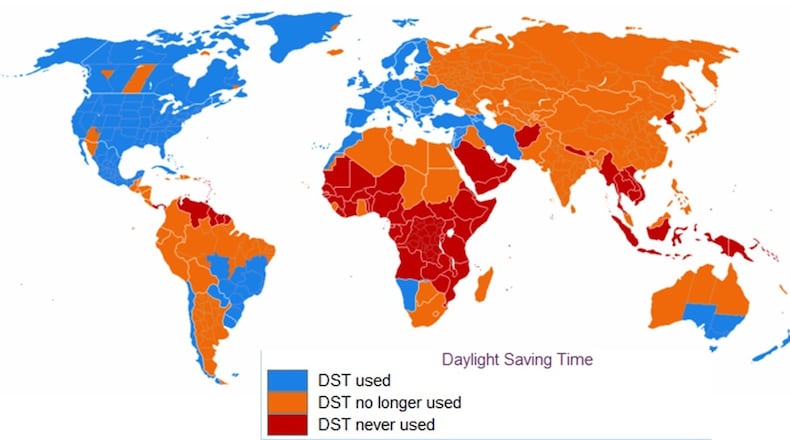So, we can likely blame an Englishman for modern daylight saving time. On an early-morning horseback ride around London in 1905, William Willett had a bright idea that the United Kingdom should move its clocks forward by 80 minutes between April and October so that more people could enjoy the longer daylight hours.
MORE: Evicted restaurant lashes out against The Greene
The Englishman published a brochure in 1907 called “The Waste of Daylight” and devoted much of his time to try enact “summer time.” Willett suggested setting the clocks ahead 20 minutes on each of the 4 Sundays in April and switching them back by the same amount on each of the 4 Sundays in September, a total of 8 time switches per year.
The British Parliament declined, and Willett died in 1915 without ever seeing his idea implemented. Germany was the first country to begin the time change on May 1, 1916. Weeks later, the United Kingdom followed suit and introduced “summer time.”
As a wartime measure, America implemented the time change on March 31, 1918. Contrary to popular belief, American farmers were deeply opposed to the switch. Farmers found daylight saving time very disruptive.
Farmers had to wait an extra hour for dew to evaporate on harvest hay, and their hired hands still left at the same time. Cows also weren’t ready to be milked earlier to meet shipping schedules. In 1919, Congress voted to override President Woodrow Wilson’s veto and ended national Daylight Saving Time. It was urban entities such as retail outlets and recreational businesses that have long pushed for daylight saving over the decades, not rural interests.
MORE: BRAVO!, Brio restaurants acquired by new owner
After the repeal in 1919, some states and cities continued to shift their clocks, which led to a lot of confusion. World War II saw national Daylight Saving Time resumed, but it ended again after the war and multiple time zones were adopted by local municipalities.
In 1963, Time magazine (ironically enough) published an article titled “A Chaos of Clocks.” By 1965 passengers on a 35-mile bus ride from Steubenville, Ohio, to Moundsville, West Virginia, passed through seven time changes.
By 1966, Congress realized something had to be done to undo the chaos, and the Uniform Time Act was enacted. This standardized Daylight Saving Time from the last Sunday in April to the last Sunday in October, although states still had the option of remaining on standard time year-round. In 2007, Daylight Saving Time was extended, by starting on the second Sunday of March and ending the first Sunday of November.
Still, not everyone follows Daylight Saving time. Hawaii and much of Arizona, along with the U.S. territories of American Samoa, Guam, Puerto Rico, and the Virgin Islands stay on standard time year-round. Around the world, only around 70 countries observe daylight saving. Many countries near the equator, which are not impacted as much by seasonal changes in daylight hours, do not follow Daylight Saving Time.
MORE: Funeral home pays $1.15 million for Washington Twp. site
While it was thought DST would help reduce energy use, a U.S. Department of Transportation study in the 1970s concluded that total electricity savings was only about 1 percent in the spring and fall months. More recent studies have found that cost savings on lighting are more than offset by greater cooling expenses with air conditioning more common than decades ago.
University of California Santa Barbara economists calculated that Indiana’s move to statewide Daylight Saving Time in 2006 led to a 1-percent rise in residential electricity use through additional demand for air conditioning on summer evenings and heating in early spring and late fall mornings. Some also argue that increased recreational activity during DST results in greater gasoline consumption. A 2016 study found that the overall rate for stroke was 8 percent higher in the two days after DST. Cancer patients were 25 percent more likely to have a stroke during that time, and people older than 65 were 20 percent more likely to have a stroke, according to the study.
So, I must admit, doing all the research on Daylight Saving Time made me wonder if it is worth the cost of the disruption it causes. It seems to me that, just about the time we get use to it, it is time to change the clocks again. How do you feel? Do you love or hate Daylight Saving Time?
About the Author
